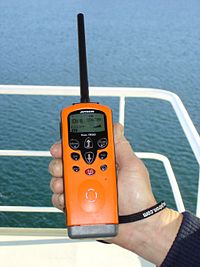
Photo from wikipedia
Fiber optic sensors (FOSs) based on the lossy mode resonance (LMR) technique have gained substantial attention from the scientific community. The LMR technique displays several important features over the conventional… Click to show full abstract
Fiber optic sensors (FOSs) based on the lossy mode resonance (LMR) technique have gained substantial attention from the scientific community. The LMR technique displays several important features over the conventional surface plasmon resonance (SPR) phenomenon, for planning extremely sensitive FOSs. Unlike SPR, which mainly utilizes the thin film of metals, a wide range of materials such as conducting metal oxides and polymers support LMR. The past several years have witnessed a remarkable development in the field of LMR-based fiber optic sensors; through this review, we have tried to summarize the overall development of LMR-based fiber optic sensors. This review article not only provides the fundamental understanding and detailed explanation of LMR generation but also sheds light on the setup/configuration required to excite the lossy modes. Several geometries explored in the literature so far have also been addressed. In addition, this review includes a survey of the different materials capable of supporting lossy modes and explores new possible LMR supporting materials and their potential applications in sensing.
Journal Title: Micromachines
Year Published: 2022
Link to full text (if available)
Share on Social Media: Sign Up to like & get
recommendations!